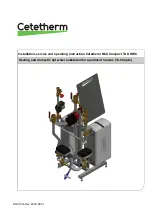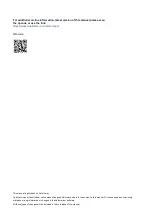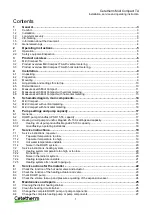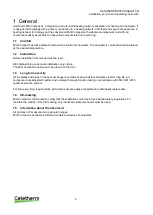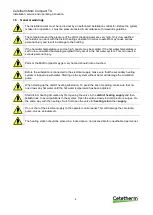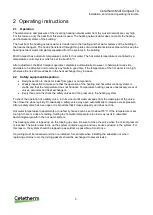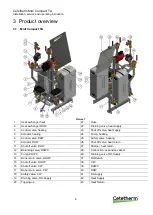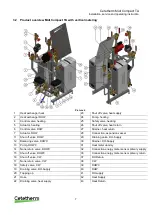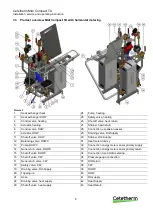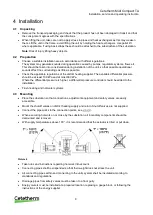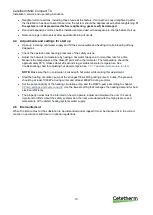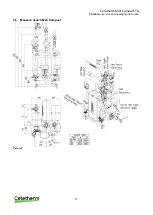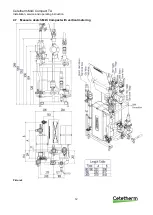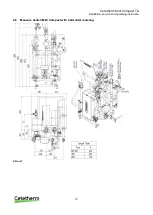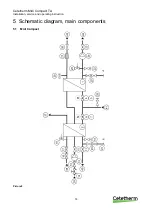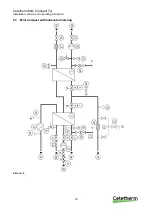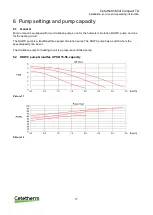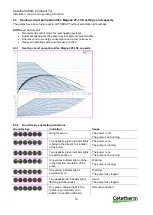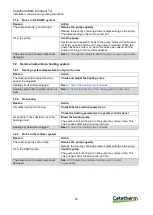
Cetetherm Midi Compact TA
Installation, service and operating instruction
5
2 Operating instructions
2.1 Operation
The temperature and pressure of the incoming heating network water from the culvert network are very high.
For this reason, only the heat from this water is used. The heating network water does not enter the heating
and hot water systems of the building.
The heat from the heating network water is transferred to the heating and hot water systems of the building in
the heat exchangers. The heat is transferred through thin plates of acid-resistant stainless steel which keep the
heating network water completely separated from the systems in the building.
Midi Compact has automatic temperature control for hot water. The hot water temperature is controlled by a
temperature control system which is set to about 55 ºC.
After adjustment, the Midi Compact operates completely automatically. However, in hard water areas it is
advisable to be attentive and to remedy any faults in good time if the temperature of the hot water is too high;
otherwise the risk of lime deposits in the heat exchanger may increase.
2.2 Safety equipment/inspection
•
Daily inspection to check for leaks from pipes or components.
•
Weekly inspection to make sure that the operation of the heating and hot water control systems is
stable and that the temperature does not fluctuate. Temperature hunting causes unnecessary wear of
valves, actuators and heat exchangers.
•
Every three months check the safety valves and the pressure in the heating system.
To check the operation of a safety valve, turn its wheel until water escapes from the waste pipe of the valve,
then close the wheel quickly. Occasionally a safety valve may open automatically to release excess pressure.
After a safety valve has been open it is important that it closes properly and does not drip.
Hot water temperature in apartments or one family houses can be set to about 55°C. If the temperature is set
too high, there is a risk of scalding. Setting the hot water temperature too low may result in unwanted
bacteriological growth in the hot water system.
The heating system is topped up via the topping up valve. Be sure to close the valve when the correct pressure
is reached. The water used to top up the system contains oxygen and may cause corrosion in the system. For
this reason, the system should be topped up as seldom as possible, at most once
If a joining must be loosened and then re-installed, for example when installing the substation or when
replacing a strainer unit, the joining gaskets should be exchanged to prevent leaks.

